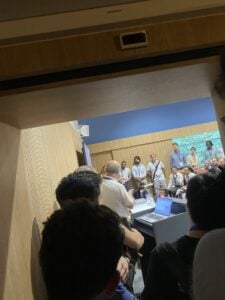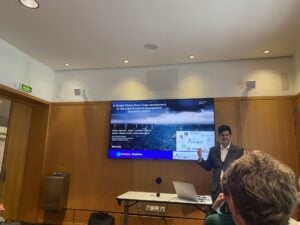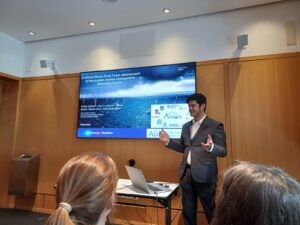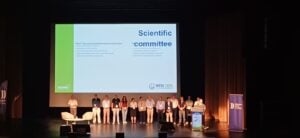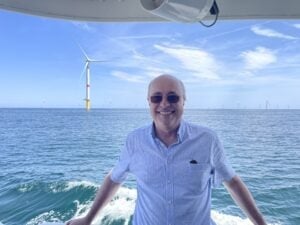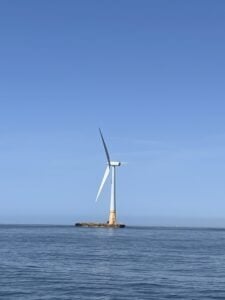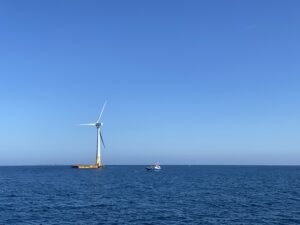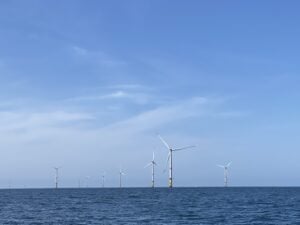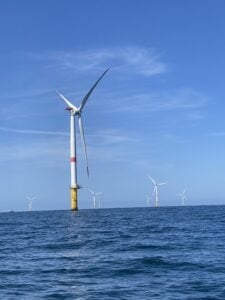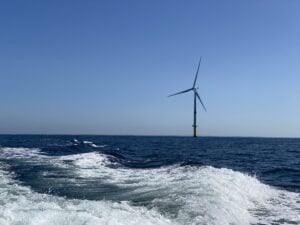A contingent of Hopkins faculty members and graduate students affiliated with the Ralph O’Connor Sustainable Energy Institute (ROSEI) were very active at the recently held Wind Energy Science Conference in Nantes, France.
The group – which included Julie K. Lundquist, the Bloomberg Distinguished Professor of Atmospheric Science and Wind Energy and Charles Meneveau, the Louis M. Sardella Professor in Mechanical Engineering – led multiple sessions and talks at the conference.
“It’s always exciting to get together with other experts from the field to discuss new advances in wind energy science and the wind energy industry,” said Lundquist, who delivered three different talks and chaired multiple sessions at the conference. “Meeting in person fosters existing collaborations and stimulates new projects. Having a big Hopkins contingent there demonstrates our commitment and innovative research in onshore and offshore wind energy.”
The talk that Meneveau gave focused on the recently released Johns Hopkins Turbulence Databases – Wind (JHTDB-wind), which provides massive amounts of data from computer simulations of turbulent flow in wind turbine arrays to help in wind farm design, analysis and operational increases to power output. The publicly available resource supports everything from academic studies to practical wind farm planning and development projects.
“The turnout was encouraging, the room was packed to the point that people were sitting on the floor, in the doorway and outside in the hallway to listen,” Meneveau said. “It was a lively discussion, plenty of questions were asked. Since the conference ended, I have received emails from a couple of people who want to solicit user tokens for JHTDB-wind database.”
There was also a highlight away from the presentations for some of the Hopkins group when they were able to take a boat tour through the St Nazaire offshore wind farm, France’s first commercial-scale offshore wind farm. Though it wasn’t a windy day that resulted in lots of actions from the turbines, it was still a memorable experience.
“We work a lot on theoretical and computer models of off-shore wind farms, but seeing off-shore wind farms in person is not something I had been able to do before, so that was special,” Meneveau said.
In addition to Lundquist and Meneveau, postdoctoral scholar William Radünz, and graduate students Nathan Agarwal and Yishu Zhang also delivered talks at the conference. Radünz’s and Zhang’s presentations focused on floating wind farms wakes and modeling at multiple length and time scales. Agarwal’s presentation focused on observational analysis from the Wind Forecast Improvement Project 3, now taking place in the Massachusetts-Rhode Island wind resource area. The Hopkins talks were well attended and elicited much interest from the audience.
JHU is a member of the European Academy of Wind Energy, which organizes the Wind Energy Science Conference every two years.

